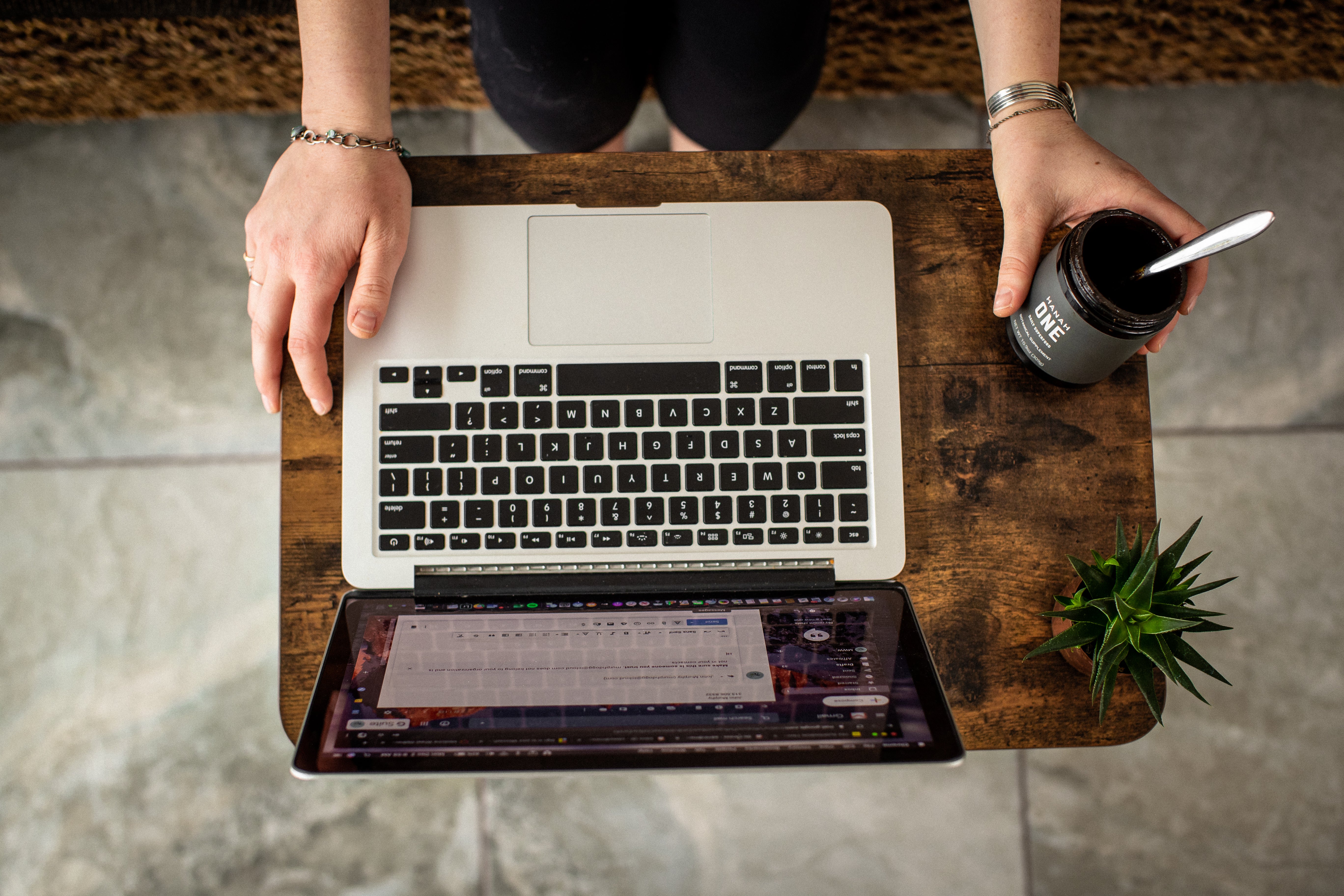How to work smarter and live healthier by moving more throughout the day

Hint: Stand more and eat well
In the past few years, people have started to recognize that sitting for hours on end every day is calamitous for their health. Thanks to books from the likes of Dr. Kelly Starrett (Deskbound), Dr. Joan Vernikos (Sitting Kills, Moving Heals), and James Levine (Get Up!), individuals are starting to get the message that sitting is, in many ways, the new smoking. And a lot of companies are getting on board as well, with everyone from startups to Silicon Valley giants like Apple replacing old-style seated desks with standing versions or those that you can raise and lower to alternate your working position.
Yet for all their promise, standing desks are by no means a panacea. While standing certainly burns more calories than sitting and helps offset some of the hip and back problems that being seated causes or exacerbates, getting stuck in one position all day – no matter what this is – is less than optimal for circulation and overall health. If we want to truly optimize our work environments, we’ve got to move more frequently, change positions more often, and, when we have no choice but to be behind our computers, fidget. Here are some tips to help you improve not only your wellbeing, but also your work performance and productivity.
Get Up, Stand Up
If you’re still spending most of your work day sitting, getting a standing desk is the first order of business. If your company won’t spring for an adjustable desk or you work from home, as many of us now are, fear not. Simply convert your existing workstation for just $25 with the Spark from Ergodriven, which comes in three different sizes and assembles in mere minutes. But once you get your standing set-up dialed in, don’t let that be the end of the change. If you stand in one place for eight hours, you’re going to get stiff ankles, painful feet, and sore knees. So make sure that even after you ditch the sitting, you change positions regularly. If you do away with your desk chair, you can replace it with a high stool that you can perch on or lean against periodically to take a load off.

Schedule Motion Breaks
Simply planning to move more during your workday isn’t enough. You’ll likely get in a flow working, become mired in a long phone meeting or video conference, or get sucked down the social media rabbit hole, and forget. Suddenly it’s lunchtime and you haven’t moved a muscle. To prevent such inertia and make sure your intentions align with your actions, put a simple system in place to help you. Either set an alarm on your phone or watch or download an app like Move, Stand Up!, or if your phone runs on Android, Randomly RemindMe, any of which can remind you to get up and move every 20 or 30 minutes.
With a bit of creativity, working from home provides more options to stay active than you would think. During this time, do some squats or lunges to get the blood flowing back to your legs and bust out a set or two of pushups to increase upper body circulation.In addition to taking walking breaks to check the mailbox or to grab another cup of Joe from the kitchen, you could put a pullup bar in a doorway and bang out a few reps during each movement break. Or keep a kettlebell in your home office so you can do some swings periodically (you could also stash a jump rope somewhere, too). Doing so won’t just increase your vitality, but also enhance the quality of your work. A study conducted by Stanford University researchers found that walking increased creativity by 60%.
Master the Art of Micro Movement
In our data obsessed culture, we’ve confined movement to how many reps we can bang out in the gym, watts we can generate in spin class, and miles we can rack up on our fitness trackers. But by reducing how we think about motion to these trackable outputs, we’re neglecting the fact that movement not categorized as “exercise” or “training” still matters. And in fact, it can make more of a difference in our overall health than anything we can do in the gym. Researchers like the afore-mentioned James Levine (from the Mayo Clinic) have demonstrated that standing on a FluidStance board requires you to make constant adjustments in your balance and positioning, engaging your muscles and other soft tissues in ways that standing alone cannot. Studies by the Mayo Clinic have shown such a device can increase your energy expenditure by 19.2 percent over sitting, with active people who move throughout the day burning up to 2,100 calories more each week than their sedentary counterparts. Not to mention the increase in cardiovascular health and reduction in joint issues that more movement provides.
Even when you’re standing in place, there are some simple things you can do to increase your NEAT level (and no, they don’t involve dropping several grand on one of those ridiculous treadmill or elliptical desks). Standing on a FluidStance board requires you to make constant adjustments in your balance and positioning, engaging your muscles and other soft tissues in ways that standing alone cannot. Studies have shown such a device can increase your NEAT score by 19.2 percent over sitting. You could also invest in a mat that has varying surfaces and gradients for you to place your feet on. And if you can get away with being barefoot or only wearing socks, moving your feet across Jill Miller’s Yoga TuneUp Therapy Balls can provide even more bloodflow-stimulating micro-movement. Plus, putting one foot on a moving device like the The Level and swinging it a little can help maintain circulation in your ankles and feet so you don’t have that awful lead-footed feeling at clocking out time.
Stretch it Out
What’s the first thing you do before preparing for a run, after a long car ride or when you first wake up? You stretch. You warm up your body’s muscles and joints, and after just a few minutes, you can feel your range of motion increase and tightness releasing. And we bet you feel great after doing it. It’s a common misconception that only athletes or dancers need to stretch, but it’s crucial for everyone in order to maintain strong, flexible and healthy muscles. According to Harvard Medical School, we need that flexibility to maintain a range of motion in the joints. Without it, the muscles shorten and become tight. Then, when you call on the muscles for activity, they are weak and unable to extend all the way. That puts you at risk for joint pain, strains, and muscle damage. Not to mention, taking a quick break to stretch and release tension can also reduce stress and fatigue
Stretching is more effective when you’re slightly warm. Spend 60-90 seconds briskly walking in place or climbing a flight of stairs to get your blood pumping. When beginning to stretch, gradually move into your desired stretching position while breathing normally — avoid holding your breath. Hold your stretch at the “end-range,” for 10-20 seconds on each side of the body, repeating 2-3 times. Avoid tensing the body and be cognizant of maintaining good posture throughout your stretching routine. When deciding where to begin, consider the areas of your body which provide the most mobility or are pain-points for tension. In most people the neck and shoulders tend to hold stress and can be a good place to start. Muscles in the legs and lower back are also a priority, as they’re crucial for mobility and can become tight when sitting for long periods.

There are umpteen blogs, podcasts, and self-help books offering hundreds of hacks to increase your output, upgrade your work environment, and improve your health while working from home. Yet the simplest and arguably most effective one involves just two words: move more. Hopefully the tips above help you get started.






Leave a comment
This site is protected by hCaptcha and the hCaptcha Privacy Policy and Terms of Service apply.